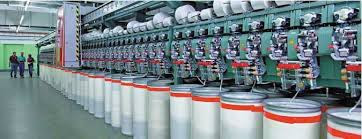What industries typically use your harmonic filters for VFD India?
In the rapidly evolving industrial landscape of India, the quest for energy efficiency, process optimization, and sustainable practices has become paramount. One technology that has gained significant traction in this pursuit is the Variable Frequency Drive (VFD). VFDs offer unparalleled control over motor speed and torque, leading to substantial energy savings and improved operational efficiency. However, the widespread adoption of VFDs has also brought to light a critical challenge: harmonic distortion. This is where harmonic filters come into play, serving as the unsung heroes that ensure the seamless integration of VFDs across various industries in India.
In this comprehensive article, we will delve into the industries that typically use harmonic filters for VFD India. We'll explore how these filters mitigate the adverse effects of harmonics, enhance power quality, and contribute to the overall reliability and longevity of industrial equipment. From the bustling textile mills of Gujarat to the vast manufacturing plants in Tamil Nadu, and from the advanced pharmaceutical labs in Maharashtra to the sprawling agricultural fields of Punjab, harmonic filters are playing a pivotal role in shaping India's industrial future.
Understanding Harmonics and the Need for Filters
Before we dive into the specific industries, it's crucial to understand what harmonics are and why they pose a threat to VFD-driven systems. In simple terms, harmonics are unwanted frequencies that are multiples of the fundamental frequency (50 Hz in India) in the power supply. VFDs, with their non-linear loads, generate these harmonics as a byproduct of their operation.
The presence of harmonics can lead to a host of problems:
- Overheating of transformers, motors, and conductors
- Nuisance tripping of circuit breakers and relays
- Malfunctioning of sensitive electronic equipment
- Increased energy losses and reduced system efficiency
- Violation of power quality standards set by regulatory bodies
Harmonic filters are designed to mitigate these issues by reducing Total Harmonic Distortion (THD) to acceptable levels. They work by providing low-impedance paths for harmonic currents, preventing them from flowing back into the power system. This not only protects equipment but also ensures compliance with standards like IEEE 519, which sets limits on harmonic distortion levels.
Now, let's explore the key industries in India that are harnessing the power of harmonic filters to optimize their VFD-driven processes.
Textile Industry
India's textile industry, the second-largest in the world, is a powerhouse of economic activity. States like Gujarat, Maharashtra, and Tamil Nadu are home to numerous textile mills that produce everything from raw cotton to high-end fabrics. The industry heavily relies on VFDs for controlling various processes:
- Spinning: VFDs control the speed of spindles, optimizing yarn quality and production rates.
- Weaving: Precise control of looms enhances fabric quality and reduces waste.
- Processing: VFDs in dyeing, printing, and finishing processes ensure uniform results.
The sensitive nature of textile machinery makes it particularly vulnerable to harmonic distortion. Harmonic filters protect delicate electronic controls, prevent machine malfunctions, and reduce downtime. For instance, in a cotton mill in Ahmedabad, the installation of harmonic filters led to a 30% reduction in machine breakdowns and a 15% increase in production efficiency.
Automotive Manufacturing
India is fast becoming a global hub for automotive manufacturing. Cities like Chennai, Pune, and Gurugram host major automakers and their suppliers. VFDs are integral to various automotive manufacturing processes:
- Assembly lines: VFDs control conveyor speeds for optimal production flow.
- Painting: Precise fan and pump control ensures uniform paint application.
- Testing: Dynamometers use VFDs to simulate various driving conditions.
Harmonic distortion can cause quality issues in sensitive processes like robotic welding or precision machining. A leading car manufacturer in Chennai reported that after installing harmonic filters, they saw a 40% reduction in welding defects and a significant improvement in the longevity of their robotic arms.
Pharmaceutical Industry
India's pharmaceutical sector, known as the "Pharmacy of the World," is centered in states like Maharashtra, Gujarat, and Telangana. The industry demands stringent process control and sterility, making VFDs indispensable:
- HVAC systems: VFDs control air handling units to maintain clean room conditions.
- Mixing and granulation: Precise speed control ensures product consistency.
- Packaging lines: VFDs optimize conveyor speeds for efficient packaging.
Harmonic distortion can compromise the accuracy of sensitive lab equipment and the sterility of clean rooms. A renowned pharma company in Hyderabad found that harmonic filters not only protected their HVAC systems but also reduced energy consumption by 20%, translating to significant cost savings.
Steel and Metal Processing
India is the second-largest producer of steel globally, with major plants in states like Jharkhand, Odisha, and Chhattisgarh. The metal processing industry relies heavily on VFDs:
- Rolling mills: VFDs control roller speeds for precise metal thickness.
- Furnaces: Blower and pump control optimizes heating processes.
- Material handling: Cranes and conveyors use VFDs for efficient movement.
The rugged nature of this industry doesn't make it immune to harmonics. The high-power requirements make harmonic mitigation even more critical. A steel plant in Rourkela reported that harmonic filters helped them reduce transformer failures by 50% and extend the life of their critical motors by several years.
Oil and Gas
India's growing energy needs have bolstered its oil and gas sector, with major operations in states like Gujarat, and Assam, and offshore in the Arabian Sea. VFDs play a crucial role:
- Pumps and compressors: VFDs optimize flow rates in pipelines.
- Drilling rigs: VFDs control the speed of mud pumps and draw works.
- Refineries: Process control valves use VFDs for precise flow regulation.
In this high-stakes industry, equipment failure can lead to catastrophic consequences. A refinery in Jamnagar found that harmonic filters not only protected their critical pumps but also helped them meet stringent safety standards by reducing the risk of electrical fires caused by overheating equipment.
Water and Wastewater Management
As India grapples with water scarcity and pollution, efficient water and wastewater management has become crucial. Cities like Bengaluru, Delhi, and Mumbai are investing heavily in this sector. VFDs are key in:
- Pumping stations: VFDs adjust pump speeds based on demand.
- Aeration systems: Blower speeds are optimized for efficient treatment.
- Desalination plants: VFDs control high-pressure pumps.
Harmonic distortion can lead to pump failures or incorrect chemical dosing, impacting water quality. A water treatment plant in Chennai reported that after installing harmonic filters, they saw a 25% reduction in pump maintenance costs and a noticeable improvement in treated water quality.
HVAC and Building Automation
India's booming real estate sector, particularly in metros like Mumbai, Delhi, and Bengaluru, has fueled the growth of advanced HVAC and building automation systems. VFDs are central to:
- Chillers and cooling towers: VFDs optimize cooling based on load.
- Ventilation fans: Speed control ensures optimal air quality.
- Elevators and escalators: VFDs provide smooth, efficient movement.
In a high-rise in Gurugram, harmonic filters not only protected the HVAC equipment but also prevented interference with the building's security and communication systems, highlighting the broad impact of harmonic mitigation.
Food Processing
India's diverse agricultural output feeds a robust food processing industry, with hubs in states like Punjab, Andhra Pradesh, and Madhya Pradesh. VFDs are crucial in the following ways:
- Refrigeration: Compressor speed control maintains precise temperatures.
- Mixing and packaging: VFDs ensure consistent product quality.
- Drying and baking: Fan and conveyor control optimizes processes.
A dairy plant in Anand found that harmonic filters not only protected their refrigeration systems but also helped them meet stringent international quality standards by ensuring process consistency.
Paper and Pulp
Despite the digital revolution, India's paper industry, concentrated in states like West Bengal, Tamil Nadu, and Maharashtra, remains significant. VFDs are used in the following ways:
- Stock preparation: VFDs control mixers and refiners.
- Paper machines: VFDs synchronize various sections for uniform paper quality.
- Winders and cutters: Speed control optimizes final product processing.
A paper mill in Coimbatore reported that harmonic filters not only protected their sensitive control systems but also reduced paper breaks by 30%, significantly boosting production efficiency.
Agriculture
India's agricultural sector, the backbone of its economy, increasingly embraces automation. States like Punjab, Haryana, and Karnataka are leading this transformation. VFDs are used in the following ways:
- Irrigation pumps: VFDs optimize water usage based on soil conditions.
- Cold storage: Compressor speed control maintains crop freshness.
- Processing equipment: VFDs control grinders, sorters, and packagers.
A potato farmer in Punjab found that harmonic filters not only protected his irrigation system but also led to a 20% reduction in water usage, showcasing how harmonic mitigation contributes to sustainable farming.
The Role of Government Policies and Standards
The widespread adoption of harmonic filters in India isn't just driven by industry needs but also by government policies and standards. The Bureau of Energy Efficiency (BEE) has been instrumental in promoting energy-efficient practices. Their Energy Conservation Building Code (ECBC) and star labeling programs indirectly encourage the use of VFDs and, by extension, harmonic filters.
Moreover, the Central Electricity Authority (CEA) has set guidelines for power quality, including limits on harmonic distortion. Industries are increasingly realizing that investing in harmonic filters is not just a technical necessity but also a regulatory requirement.
The Economic and Environmental Impact
Adopting harmonic filters in VFD-driven industries has far-reaching economic and environmental impacts. By preventing equipment failures and reducing energy losses, these filters contribute to substantial cost savings. A study by the Indian Institute of Technology, Delhi, estimated that proper harmonic mitigation could save Indian industries up to ₹5000 crores annually in reduced downtime and energy costs.
Environmentally, the energy savings translate to a reduced carbon footprint. With India committed to reducing its emissions intensity and increasing its renewable energy capacity, every kilowatt saved contributes to national goals. The same IIT Delhi study suggested that widespread harmonic mitigation could reduce India's industrial carbon emissions by 2-3%, a significant contribution to global climate efforts.
The Future of Harmonic Mitigation in India
As India strides towards its goal of becoming a $5 trillion economy, the role of harmonic filters in ensuring efficient, reliable, and sustainable industrial operations will only grow. Several trends are shaping this future:
- Industry 4.0: As Indian industries embrace IoT, AI, and data analytics, the sensitivity of equipment to power quality issues will increase, making harmonic mitigation even more critical.
- Renewable Integration: India's ambitious renewable energy targets mean more variable power sources. VFDs will be crucial for grid stability, and harmonic filters will ensure they don't add to the power quality challenges.
- Electric Mobility: The shift towards electric vehicles will see more VFDs in charging infrastructure and manufacturing. Harmonic filters will be essential to protect these systems and the grid.
- Research and Innovation: Indian institutions are at the forefront of research in power electronics. Innovations in active harmonic filters and AI-driven harmonic management are on the horizon.
Conclusion
From the textile mills of Surat to the steel plants of Bokaro, from the pharma labs of Hyderabad to the tech parks of Bengaluru, harmonic filters are the silent guardians of India's VFD-driven industrial progress. They don't just protect equipment; they enhance efficiency, reduce costs, ensure regulatory compliance, and contribute to sustainability goals.
As India navigates the complexities of rapid industrialization, balancing growth with environmental responsibility, the role of technologies like harmonic filters becomes pivotal. They embody the ethos of 'Make in India' and 'Atmanirbhar Bharat' (Self-Reliant India) by fostering robust, efficient, and globally competitive industries.
In the grand tapestry of India's industrial revolution, harmonic filters might seem like small threads. But as we've seen, they are woven into every sector, strengthening the fabric of the nation's economic and environmental resilience. As India powers ahead, it does so with the assurance that its harmonics are in check, its VFDs are optimized, and its industries are primed for a future of sustainable growth and global leadership.




Comments
Post a Comment